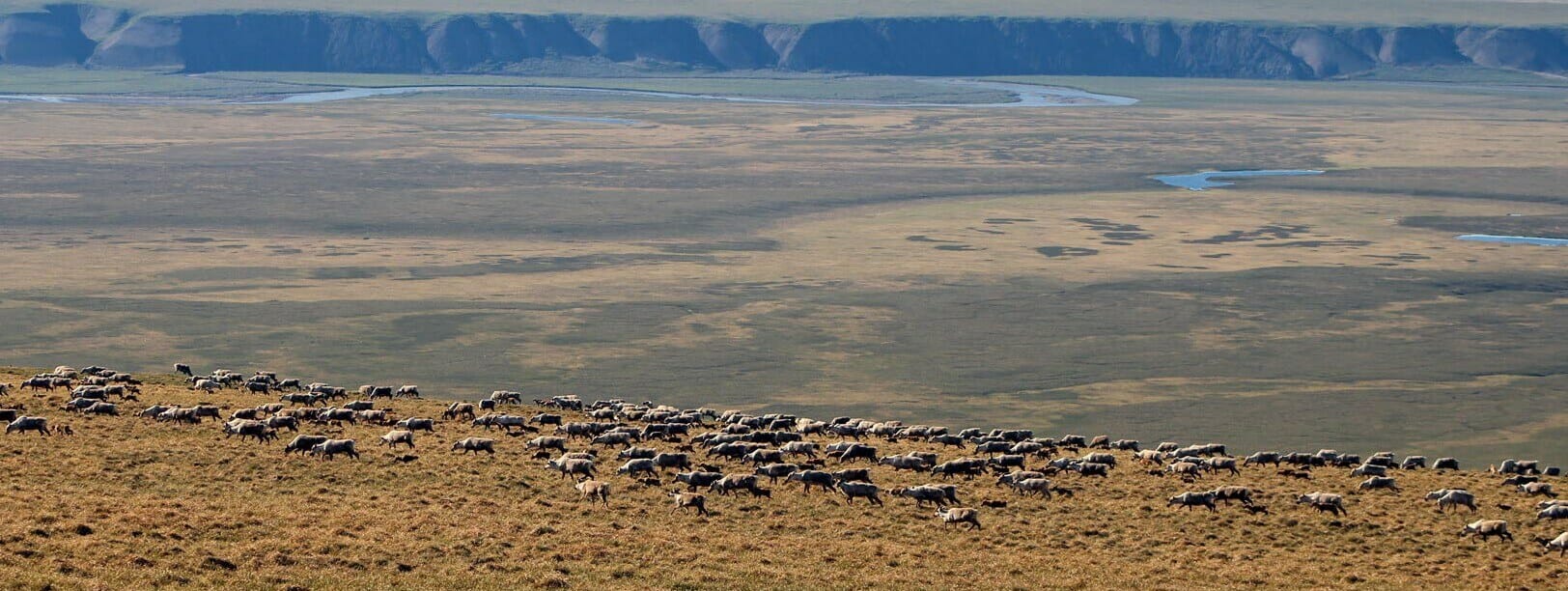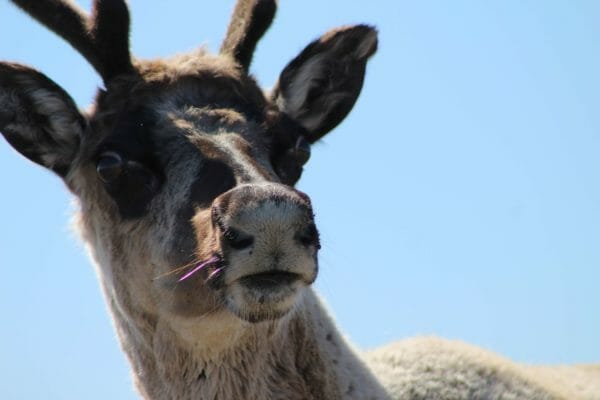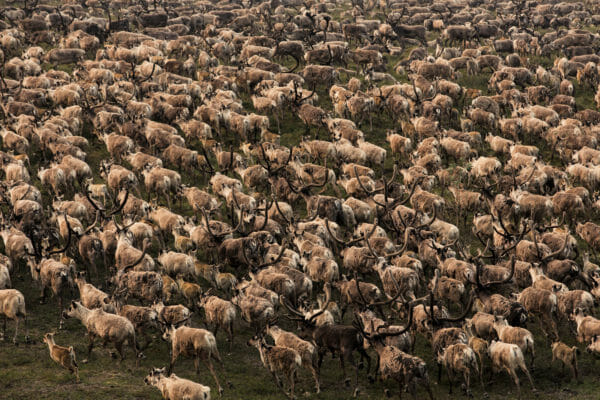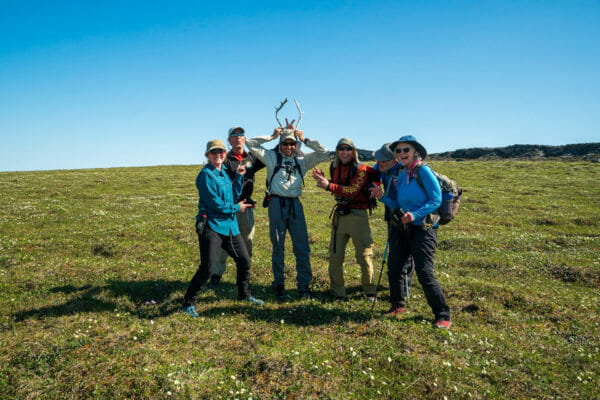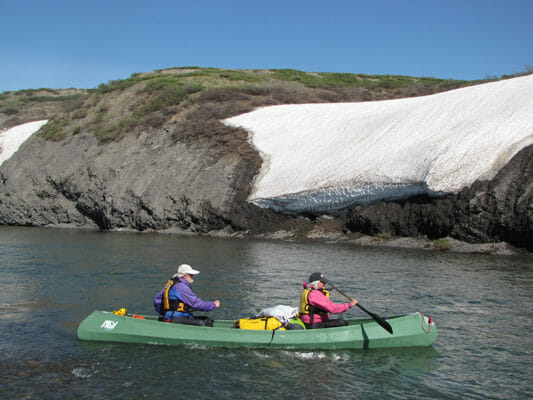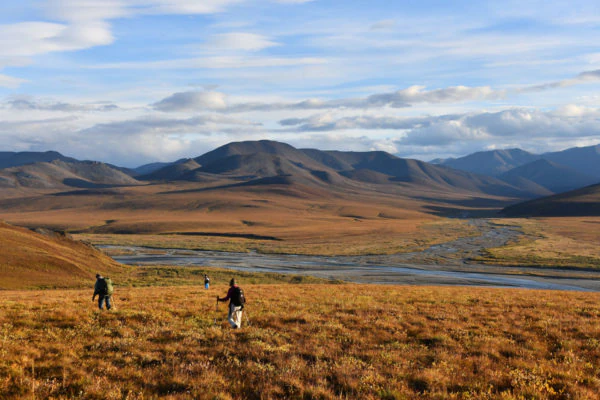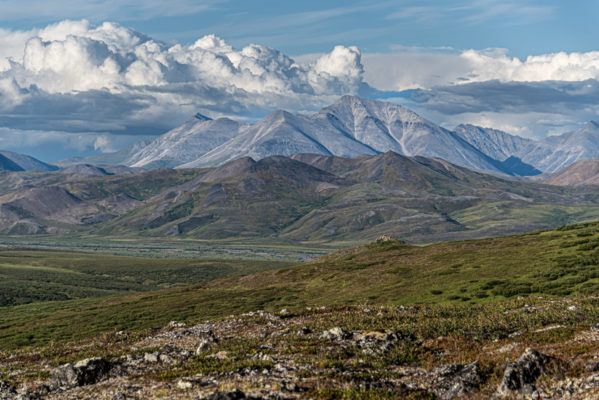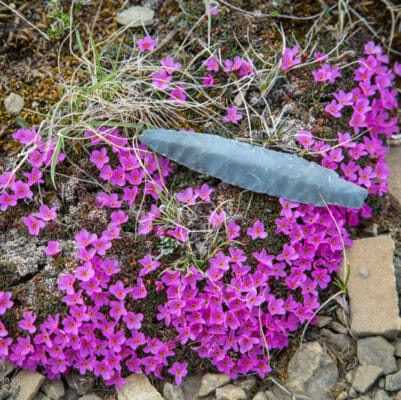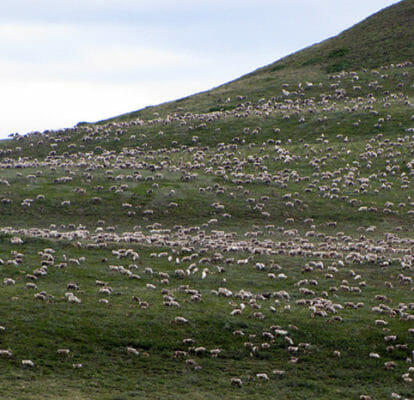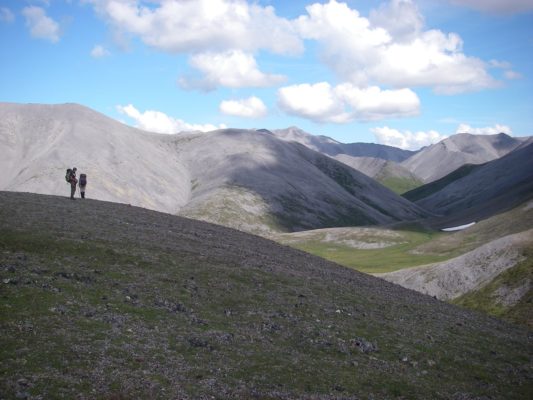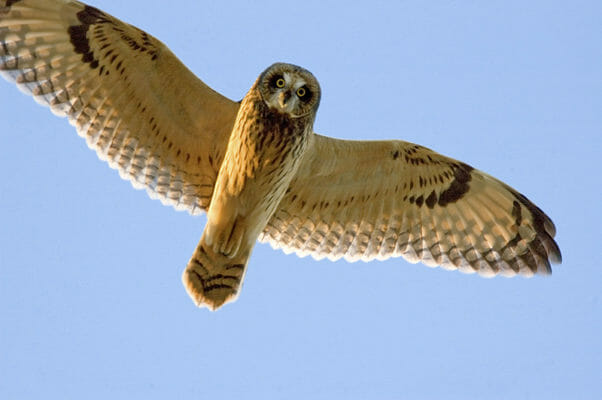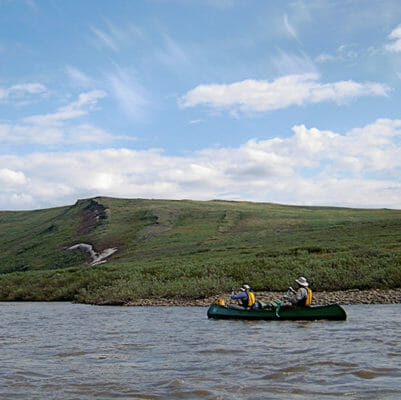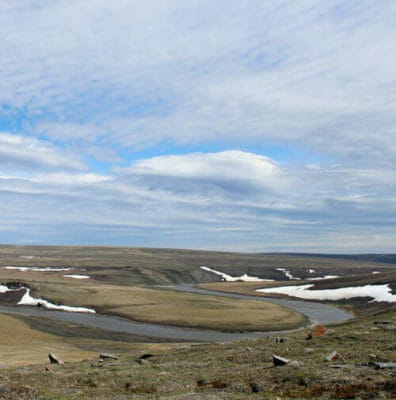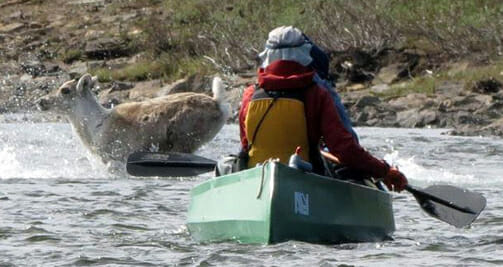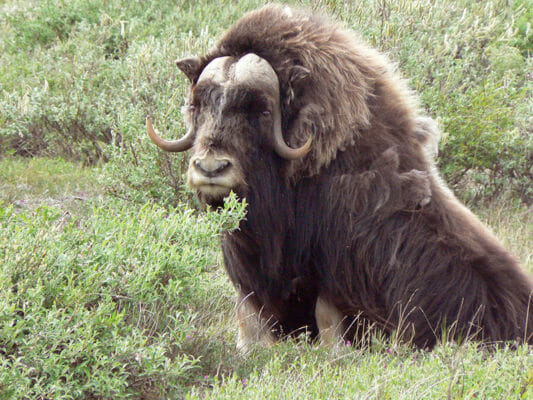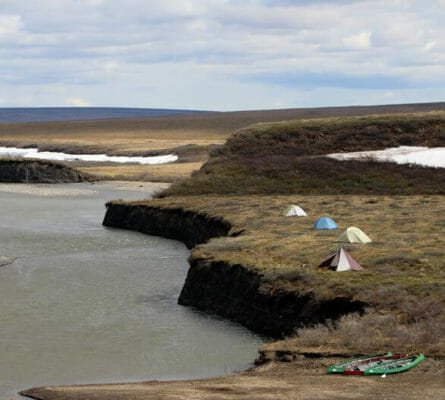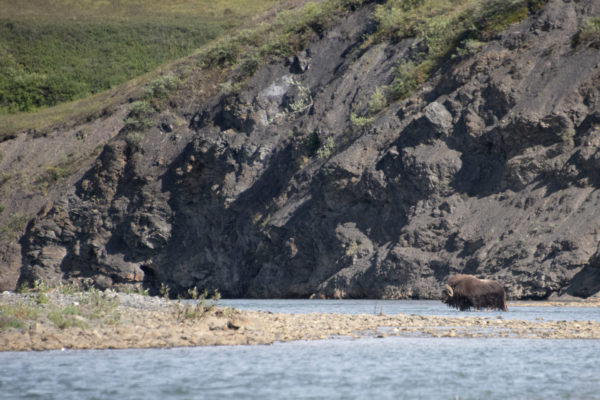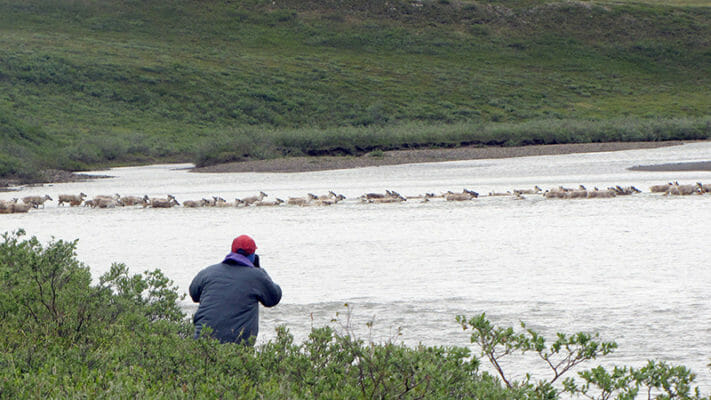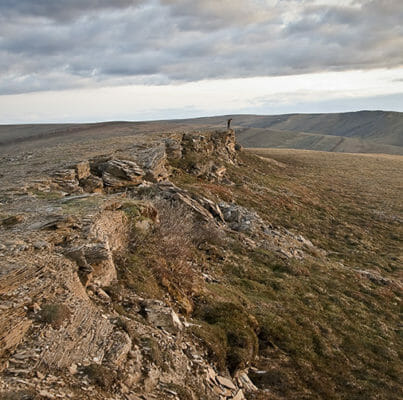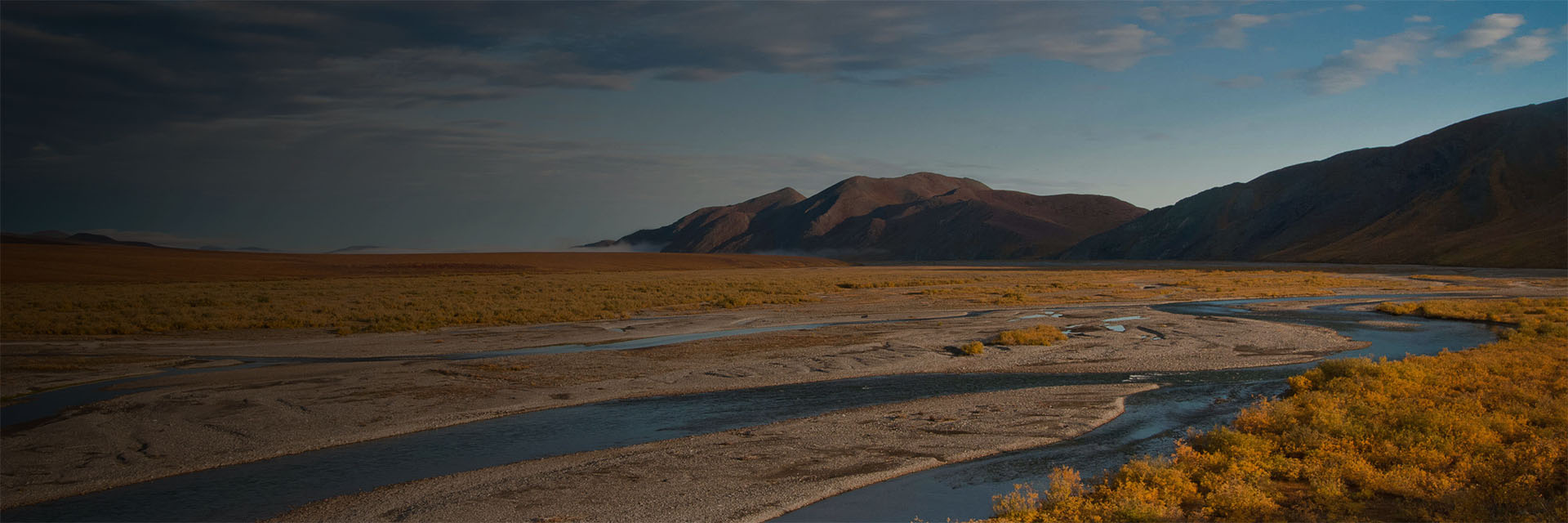Last updated: December 19, 2023
Itinerary
What follows is a general flow of events. Expect the unexpected and prepare to be flexible.
June 9
Pre-trip meeting with your guides in Kotzebue at 6:45 pm.
June 10
Our trip begins with a planned flight over the Noatak Valley and into the Brooks Range. We fly on and on, watching the world’s largest terrestrial wilderness pass below us. After crossing the Brooks Range we land on a gravel island along the river. After unloading the plane and pitching camp we will have nothing but time to explore this pristine area.
June 11
After discussing river safety and boat handling, we assemble the canoes and head downriver. Gravel and sand bars fill the broad floodplain valley allowing us the opportunity to get comfortable in the canoes and relax under the broad sky. We will only paddle around 10 miles of this clear river on our first day. Our priority will be to make sure everyone feels safe and confident in the boats.
June 12
The upper valley hosts not only an abundance of wildlife, but an abundance of fossil life. Coal beds can be reached from the river and marine and terrestrial fossils abound. We will likely take our first layover/ hiking/ rest day to enjoy the mountains and explore away from the river.
The river cuts perpendicular to the east- west ridges that define this part of the Brooks Range. We will have the opportunity to ascend some of these broad colorful ridges on our day-hikes and evening walks. Alpine species like Alaska marmots and rosy finches inhabit the rocky ledges and the views of the complex geology and endless landscape are spectacular.
June 13 - 19
We will mix paddling days with hiking days. We have some miles we must cover but the schedule allows ample time for exploration on foot and leisure time in camp. As we travel north, the river grows from a large creek to a meandering river. There are obstacles to avoid but for the most part we can devote our attention to scenery and wildlife.
The river cuts through many small sub-ranges of the Brooks Range. In between each of these ranges are broad valleys where you feel as if you could be swallowed by the sky. Our camps usually alternate between the broad basins where we spend a single night and the folded ridges where we can enjoy a hiking day. If we run into big groups of caribou we’ll almost certainly spend a couple of nights in their company.
Like all our trips, this is a true wilderness expedition. The land, the river, the weather, the wildlife, along with our desires dictates the rhythm of the trip and the specifics of each day.
June 20
At the appointed gravel bar we will wait for our pilot and then (if the weather allows) fly back to Kotzebue. We hope to be back in Kotzebue by about 6 pm. Time to take a shower!





